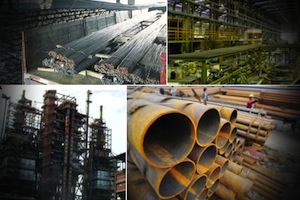The Perwaja debacle: Part 1
The Japanese used the Malaysian company as a guinea pig to test new technology.
Iskandar Mohamad, Free Malaysia Today
The story of Perwaja is the story of a loss so great that it goes down the annals not just of Malaysian history, but world history. It is enough to shock the most ardent Mahathirists into silence.
It all started on April 22, 1982. With a paid-up capital of RM250 million, Perwaja Terengganu Sdn Bhd was born. The construction of the plant began six months later.
By the end of 1986, Perwaja Terengganu was already in the red, with a total loss of RM131 million due to management problems and also the appreciation of the yen.
One doesn’t have to be a rocket scientist to figure out why Perwaja ran into trouble.
The plant at Kemaman is just a big steel factory planted smack in a plot surrounded by jungle and far from the sea. Economically speaking, it is an impossible location due to a DNA deficiency of export competitiveness from Day 1.
Secondly, why would any sane person want to open a steel factory in the east cost of the peninsula when steel is consumed in huge volumes on the west coast? Anyone with common sense would locate the steel plant in the west coast to save transport costs. However, Mahathir justified the decision by claiming he was taking industrialisation to the east coast.
To make matters worse, Perwaja had a management team that lacked experience. In fact, this was a major blunder.
Perwaja’s Japanese partner, Nippon Steel, as well as the Korean company POSCO and the Korean government engaged BHP, an Australian mining firm, to review the engineering plans. Apart from that wise and calculated move, a Korean consultant was also engaged to check on the Australian firm.
Whom did Perwaja hire to check on its plans? No one.
Perwaja did not take any precautions in its strategies and believed wholesale in a proposal from Nippon Steel to produce Direct Reduced Iron (DRI) to use a new gas-based technology to convert ore into sponge iron for making steel, bypassing traditional and proven iron ore sintering and blast furnace procedures.
Such a move proved costly and detrimental to Perwaja.


